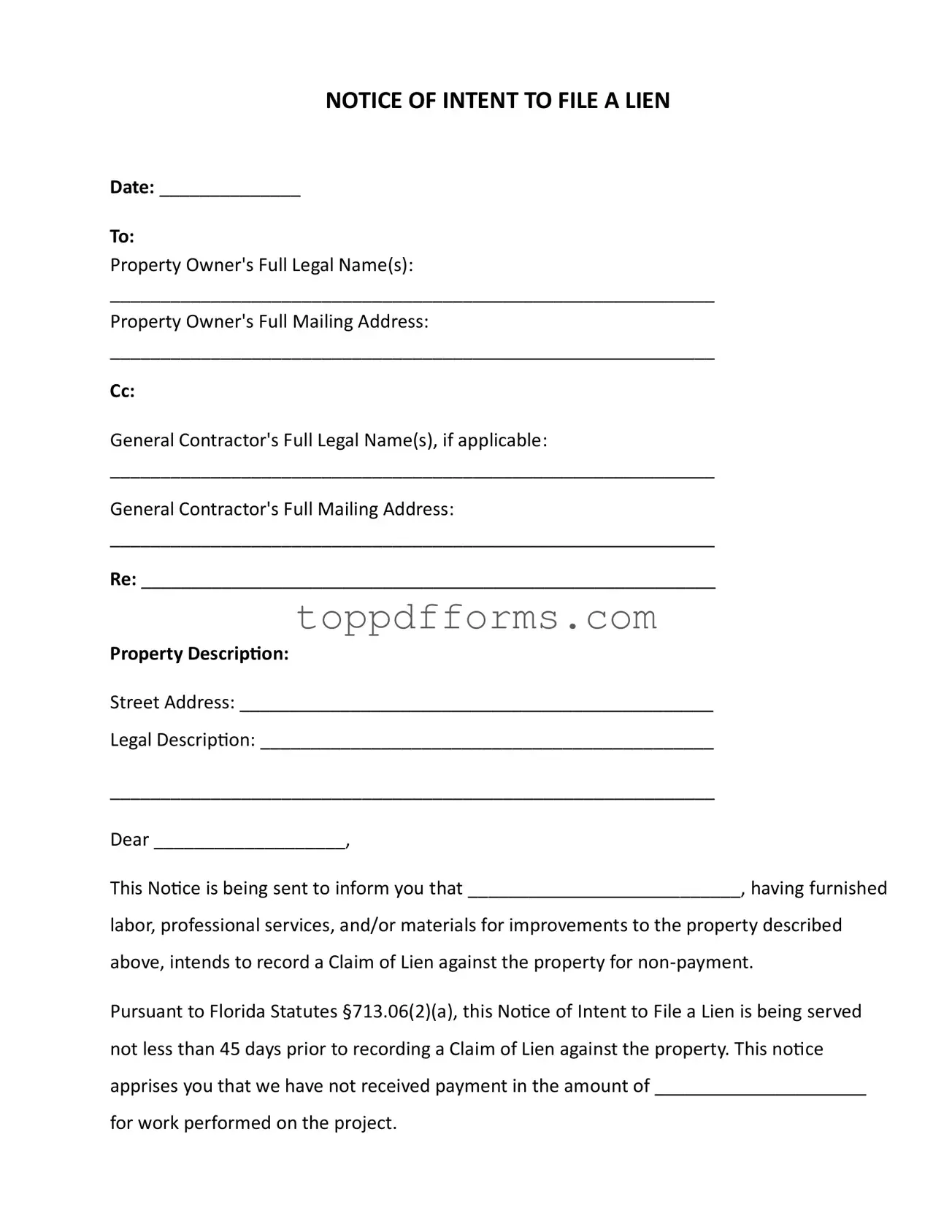What is the Intent to Lien Florida form?
The Intent to Lien Florida form is a legal document used by contractors, subcontractors, or suppliers to notify property owners of their intention to file a lien against a property for non-payment. It serves as a formal warning that payment is due and provides the property owner with a specified timeframe to respond before further legal action is taken.
Who should use the Intent to Lien form?
This form is primarily used by individuals or companies that have provided labor, materials, or services for a property improvement project but have not received payment. This includes general contractors, subcontractors, and suppliers. It is essential for anyone in the construction or renovation industry who wants to protect their right to payment.
What information is required on the form?
Key information includes the date, the property owner's full legal name and mailing address, the general contractor's details (if applicable), a description of the property, and the amount owed for the work performed. Additionally, the form should include a clear statement of the intent to file a lien if payment is not received.
How does the timeline work for the Intent to Lien?
According to Florida law, the notice must be served at least 45 days before filing a Claim of Lien. After receiving the notice, the property owner has 30 days to respond or make payment. If no satisfactory response is received within this timeframe, the contractor may proceed to file the lien against the property.
What happens if the property owner does not respond?
If the property owner fails to respond or make payment within the specified 30 days, the contractor can file a Claim of Lien. This legal action may lead to foreclosure proceedings on the property, which can result in additional costs, such as attorney fees and court costs, for the property owner.
Is it necessary to send the Intent to Lien via certified mail?
While it is not strictly required, sending the Intent to Lien via certified mail is highly recommended. This method provides proof of delivery and ensures that the property owner receives the notice. Other delivery methods, such as hand delivery or using a process server, can also be utilized to ensure the notice is properly served.
Can the Intent to Lien be canceled or withdrawn?
Yes, the Intent to Lien can be canceled or withdrawn if the issue is resolved before the lien is filed. This typically involves reaching an agreement with the property owner regarding payment. It’s important to document any agreements made to avoid confusion later on.
